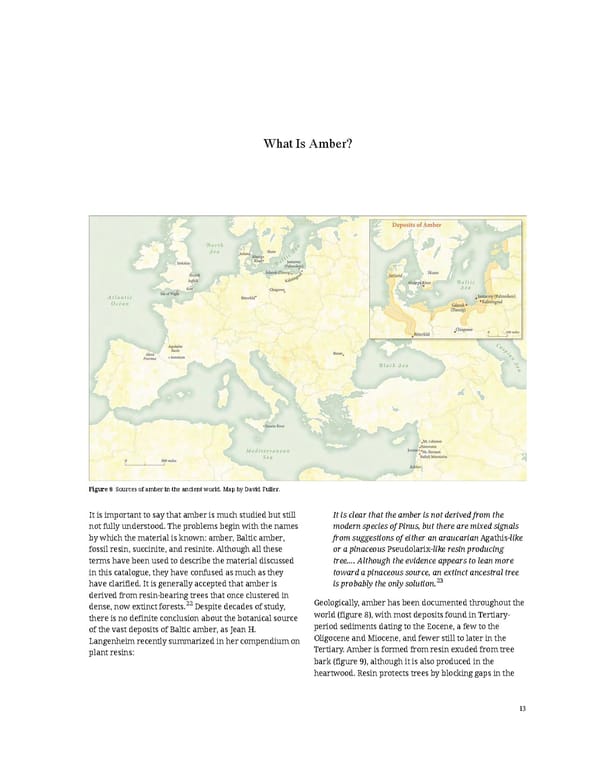What Is Amber? Figure 8 Sources of amber in the ancient world. Map by David Fuller. It is important to say that amber is much studied but still It is clear that the amber is not derived from the not fully understood. The problems begin with the names modern species of Pinus, but there are mixed signals by which the material is known: amber, Baltic amber, from suggestions of either an araucarian Agathis-like fossil resin, succinite, and resinite. Although all these or a pinaceous Pseudolarix-like resin producing terms have been used to describe the material discussed tree.… Although the evidence appears to lean more in this catalogue, they have confused as much as they toward a pinaceous source, an extinct ancestral tree have clarified. It is generally accepted that amber is is probably the only solution.23 derived from resin-bearing trees that once clustered in dense, now extinct forests.22 Despite decades of study, Geologically, amber has been documented throughout the there is no definite conclusion about the botanical source world (figure 8), with most deposits found in Tertiary- of the vast deposits of Baltic amber, as Jean H. period sediments dating to the Eocene, a few to the Langenheim recently summarized in her compendium on Oligocene and Miocene, and fewer still to later in the plant resins: Tertiary. Amber is formed from resin exuded from tree bark (figure 9), although it is also produced in the heartwood. Resin protects trees by blocking gaps in the 13
 Ancient Carved Ambers in the J. Paul Getty Museum Page 22 Page 24
Ancient Carved Ambers in the J. Paul Getty Museum Page 22 Page 24